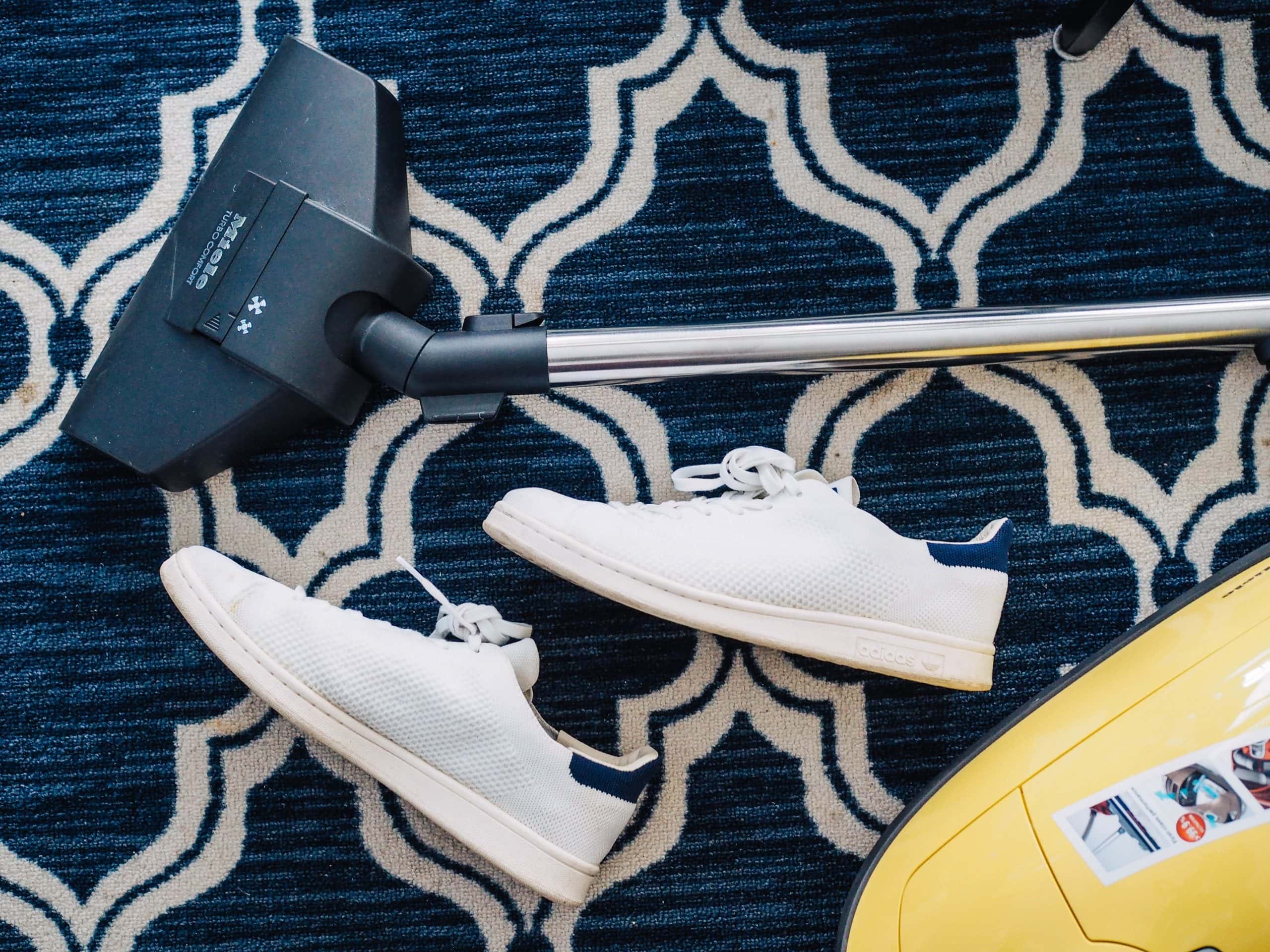I can imagine you’re probably rolling your eyes at this point, but stay with me… ..A bit of background about dust – Depending on the type and size of particles, the effects of dust on health can be serious. According to Andrea Ferro[i], some dust particles are small enough to float in the air, and we can breathe them into our lungs. Dust can also be inhaled through our nose. Other dust particles are larger and tend to settle on floors, which is easily accessible for young children to ingest. Without vacuuming this dust tends to stick around for a long time.[ii] But why should we care? Well, there are no innocuous dusts – any exposure to dust is a risk. In fact, even if you don’t have a dust allergy, the components found in dust can affect your lungs and overall health.
Dust comes from two main sources – outside and inside your home. Research indicates that approximately one-third of dust originates within the home, and two-thirds comes from outside into the home.[iii] The outside dust comes inside mostly on our shoes and clothes, with a small amount entering through the front door as we walk in, and through unsealed cracks around the house/windows. Inside there are organic and inorganic dust contributors – pet dander and skin flakes, insects and bugs inside your home (organic); and the decay/breaking down of material objects within your home (inorganic).
Researchers who examine household dust samples have found environmental chemicals (eg the now banned, but still environmentally prevalent, pesticide DDT; and lead) and other toxics in dust[iv]. Since the 1970s, manufacturers of many household products have been adding flame retardant chemicals to reduce the likelihood of them catching fire and to slow down combustion. But the problem is that flame retardants are still chemicals – chemicals that are not without side effects that can negatively affect our health. As these chemicals are added after the product is made, the flame retardants aren’t permanently stuck to the product and can “escape” into the environment during manufacturing, consumer use and eventual disposal. When these chemicals are released into the environment they can remain in air, water and wildlife. In our homes they can easily become vapours and airborne dust. Research has linked flame-retardant chemicals to:
- hormone disruption;
- cancer;
- thyroid disruption;
- memory and learning problems;
- delayed mental and physical development;
- lower IQ;
- advanced puberty; and
- reduced fertility.
Even though they’re linked to negative health effects, flame retardant chemicals are still used in MANY common household products including:
- foam in couches and baby products (eg foam change mats);
- building insulation;
- carpets;
- drapes;
- personal computers;
- TV sets; and
- electrical cables.
Friction and heat generated through the normal use of these household products — eg sitting on a couch, walking on carpet, or watching TV — can accelerate the release of these flame retardant chemicals. Aside from containing flame retardant chemicals, carpets are also considered problematic for the indoor air quality, including potential adverse health associations.[v] Research has shown that carpets may act as a sink/repository for indoor air pollutants that then become airborne during everyday indoor activity.[vi]
For Us and Earth tips:
Most families don’t have the budget to replace all these household items with flame-retardant-free versions. So, to reduce your exposure to flame retardants and other chemicals that can accumulate in your home, try to keep your house clean by:
- dusting with a damp cloth;
- using a vacuum with a HEPA filter, which traps small particles of dust instead of blowing them around the house. Without the HEPA filter, the air exiting your vacuum cleaner will recirculate up to 80% of all the dust particles you’ve sucked up. These particles eventually settle on walls, carpets, drapes and furniture;
- ensuring your house cleaner (if you have one) only uses a HEPA vacuum cleaner – otherwise you may end up with all sorts of dust particles from other people’s homes recirculating in your air. Yuck!!
If you can’t afford a HEPA vacuum cleaner right now, don’t panic! The cheapest way to reduce your home’s toxic dust load, is very simple – REMOVE YOUR SHOES at the door!! Shoes can track in toxic chemicals like lawn pesticides, and coal tar from a driveway, plus plenty of germs and dirt.
Apart from making your house healthier, your floor coverings and shoes will last longer (saving money), and (fingers crossed) you won’t need to vacuum as often too. Admittedly, removing your shoes when you arrive home, can be a tough habit to get into, so try these tips:
- Keep a shoe rack or basket near the door so that everyone does it automatically, as soon as they get home;
- Create an inviting space either directly outside or inside your door that reminds you – we set up a bench to sit on inside our front door, with shoe storage shelves underneath; and
- encourage guests to remove their shoes by either directly asking them or hanging a “Please remove your shoes” sign near your front door.
Yours in Health,
Carolyn
[iv] Study: Household Dust Contains Poisons, Allergens, DDT – TIME
[v] Do Carpets Impair Indoor Air Quality and Cause Adverse Health Outcomes: A Review – PubMed (nih.gov)
[vi] Do Carpets Impair Indoor Air Quality and Cause Adverse Health Outcomes: A Review – PubMed (nih.gov)



Want to learn more about reducing your exposure to toxics in your everyday products, and other simple swaps for a healthier you & earth?
Sign up here and receive my free 5 Easy Ways to Reduce Toxics OR Join my mailing list and receive regular tips to lower your toxic load.